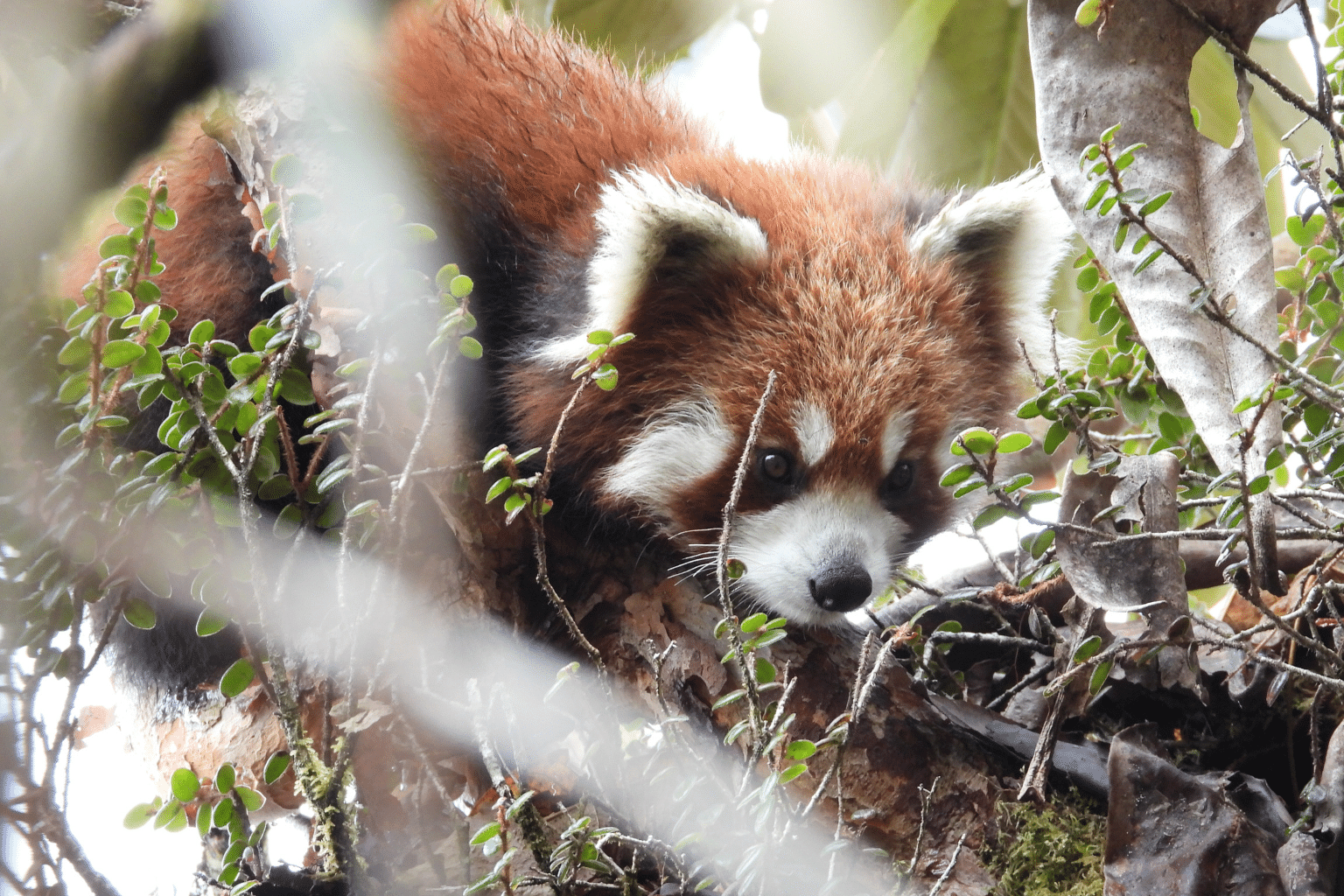Wildfire Threatens Wild Red Pandas in Nepal
Local people come to the aid of the firefox as the Pathibhara wildfire burns a vulnerable landscape.
A wildfire has been scorching high-mountain forest near the summit of Pathibhara hill in eastern Nepal's Taplejung district.
This is a location of prime red panda habitat that is very close to where a red panda was spotted by participants of one of Red Panda Network’s (RPN) ecotrips in March 2019.
Members of our community partner, Himali Conservation Forum (HCF), and the Pathibhara-Simbu, Sunpati, and Mayam Patal Community Forest have been part of the local firefighting response. For days the fire continued to spread — containment efforts were impeded by strong winds — and according to the Divisional Forest Office (DFO), Taplejung, approximately 150 hectares of forest areas have been burned in Pathibhara Simbu and Sunpati Community Forests.
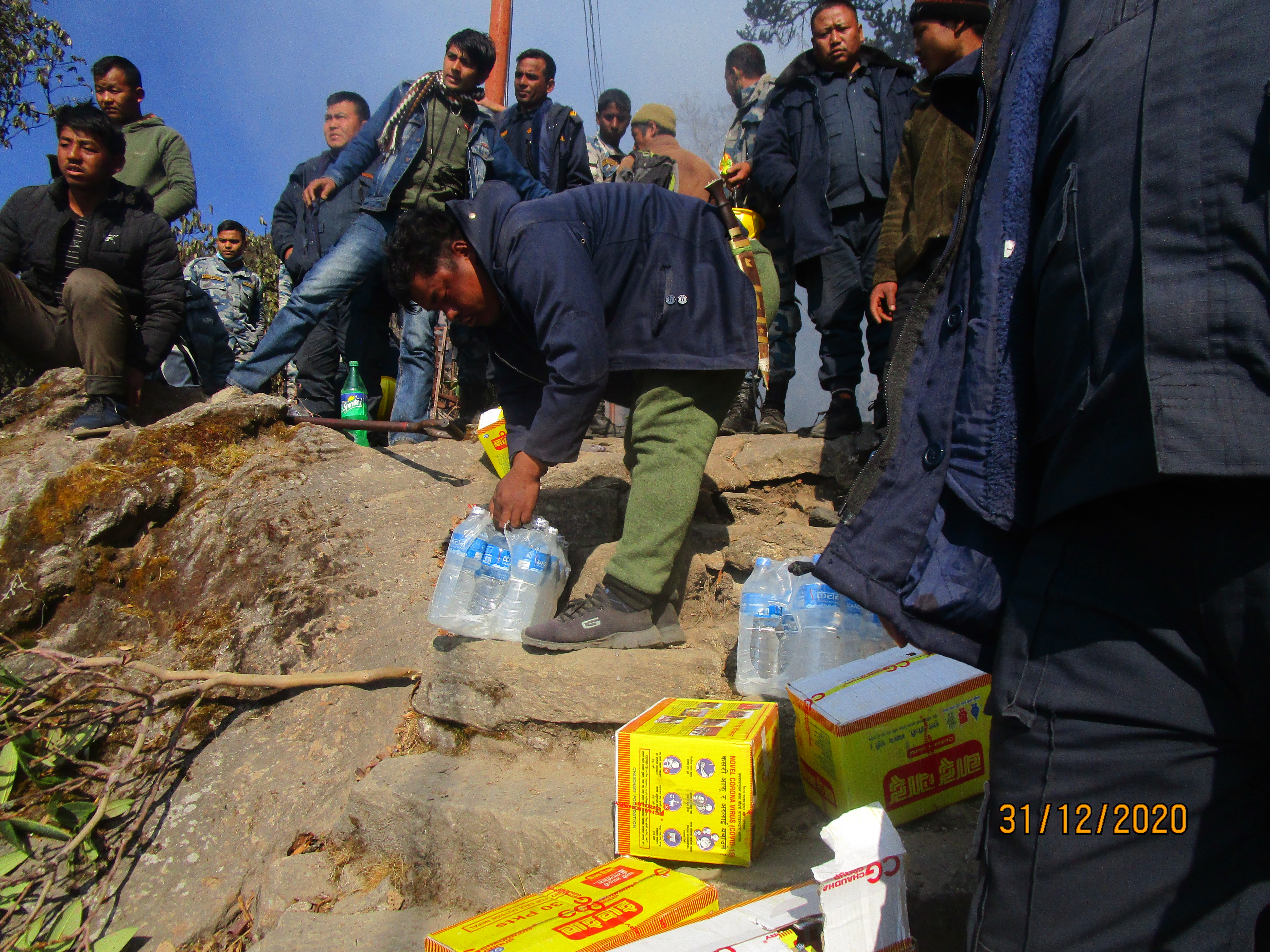 Transportation and distribution of essential supplies by the firefighting response team. © Remesh Rai
Transportation and distribution of essential supplies by the firefighting response team. © Remesh Rai
The Community Forest model has helped to bolster sustainable forest management and increase forest cover in Nepal. Unfortunately, wildfires are a major contributor to habitat loss and degradation in Nepal with data showing that about 400,000 hectares of forest burns every year (since 2002). They are often human-induced.
The Pathibhara Simbu and Sunpati Community Forests have been sites of our community-based red panda monitoring program since 2010. The Firefox Guardian is a documentary about Menuka Bhattarai, our first female Forest Guardian, that was filmed in the Pathibhara Simbu Community Forest which is now heavily burned.
These Community Forests also border the Kangchenjunga Conservation Area (KCA): identified as one of the biologically richest regions in the Eastern Himalayas. A Community Forest in the KCA has also been burned by the wildfire.
“This is a big loss for the red panda and biodiversity of the Panchthar-Ilam-Taplejung (PIT) corridor. It will take several years to recover this loss. We are very committed and will collaborate with all stakeholders for recovering this biggest loss of the year for the PIT corridor.” said Ang Phuri Sherpa, Country Director for RPN.
Ramesh Rai, HCF's Program Coordinator, led a firefighting response team that engaged local people in protecting their Community Forests, as well as in providing essential supplies such as food, water and first-aid medical kits. Thanks to the support from our generous donors, Rai and a team of our Forest Guardians were able to receive first aid training in 2019. “The firefighting team lacked enough equipment, personal protective gear, and first-aid medicine. We have to provide more support to these forest users and the people who manage tea houses along the Pathibhara trail. Due to the lack of proper tools, people relied on tree branches to contain the fire” said Rai. The other members of the wildfire response team were from Nepal Police, Armed Police Force, and Nepal Army from Taplejung and Panchthar districts.
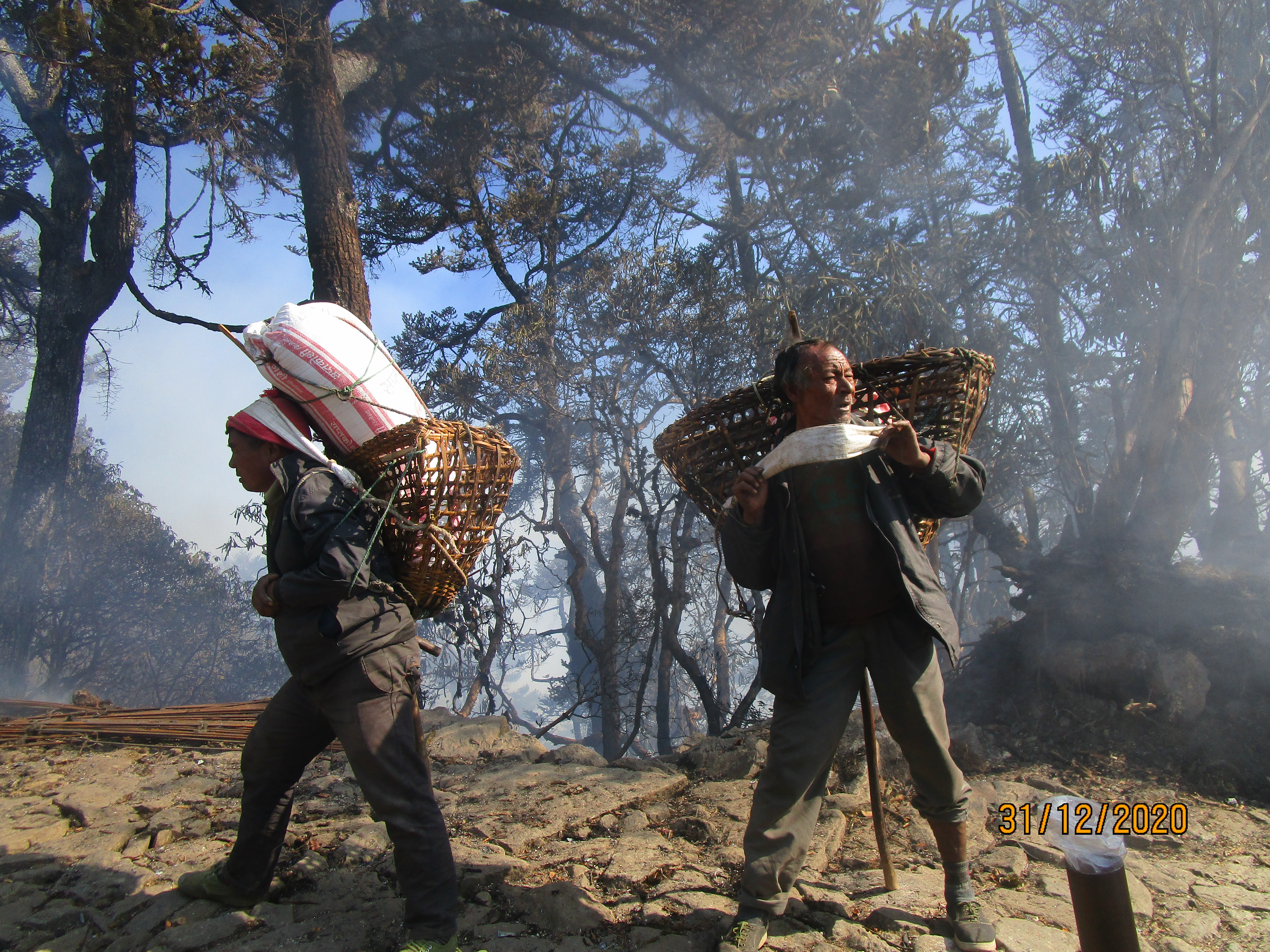
HCF coordinated with the DFO of Taplejung in mobilizing the local community to fight the fire. Birendra Yadav, local Divisional Forest Officer, said, “it is important to train and equip the local communities with the firefighting tools and gear. We should work collaboratively in organizing such training in the future but the DFO lacks resources to combat wildfires.”
Now the wildfire in Taplejung is mostly contained but firefighters haven't been able to extinguish many of the areas that are currently burning. A significant challenge for containing wildfire in the Pathibhara region is lack of local water sources. Fortunately, RPN has been supplying drinking water pipes to herders and other community people and creating water holes for wildlife and livestock; we created four water holes in 2020.
Thanks to the support of our donors and conservation partners around the world, in 2017 we were also able to provide Deurali Bhitri, Yamabung and Pathibhara Simbu Community Forests in Taplejung with firefighting equipment, personal protective gear and training, which have been critical to our success in containing the Pathibhara wildfire and protecting red panda habitat.
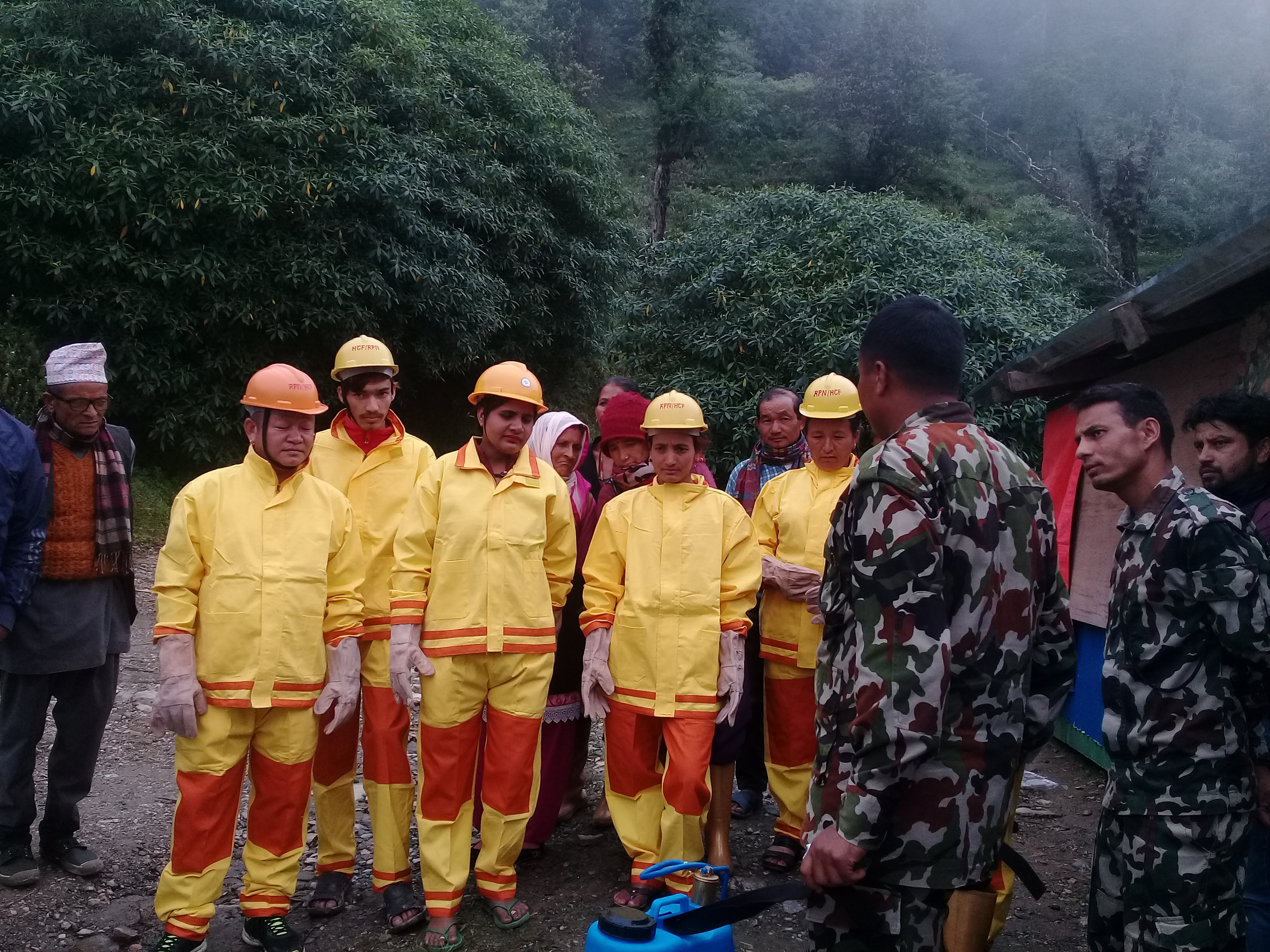 Firefighting training in Taplejung in 2017. © RPN
Firefighting training in Taplejung in 2017. © RPN
In order to buffer the impact of wildfires — including fires from anthropogenic activities — on red panda habitat, populations and other threatened, sympatric species; RPN has been organizing community wild firefighting teams since 2015.
Our community-based wildfire management program in eastern Nepal has trained more than 250 local people. The firefighting teams consist of Community Forest User Group (CFUG) members trained in combating wildfires and educated on fire types, causes, effects and preventive measures. RPN also provides wildfire-fighting tools and personal protective gear to the team members.
These efforts have helped increase awareness among CFUGs on how to prevent fires and the adverse impacts on biodiversity.
“One of the best ways to prevent wildfires is to train, engage and mobilize the local community people on wildfire management. The people from their own community could be the cause of the wildfire and thus working with the primary reason would be the best option.”
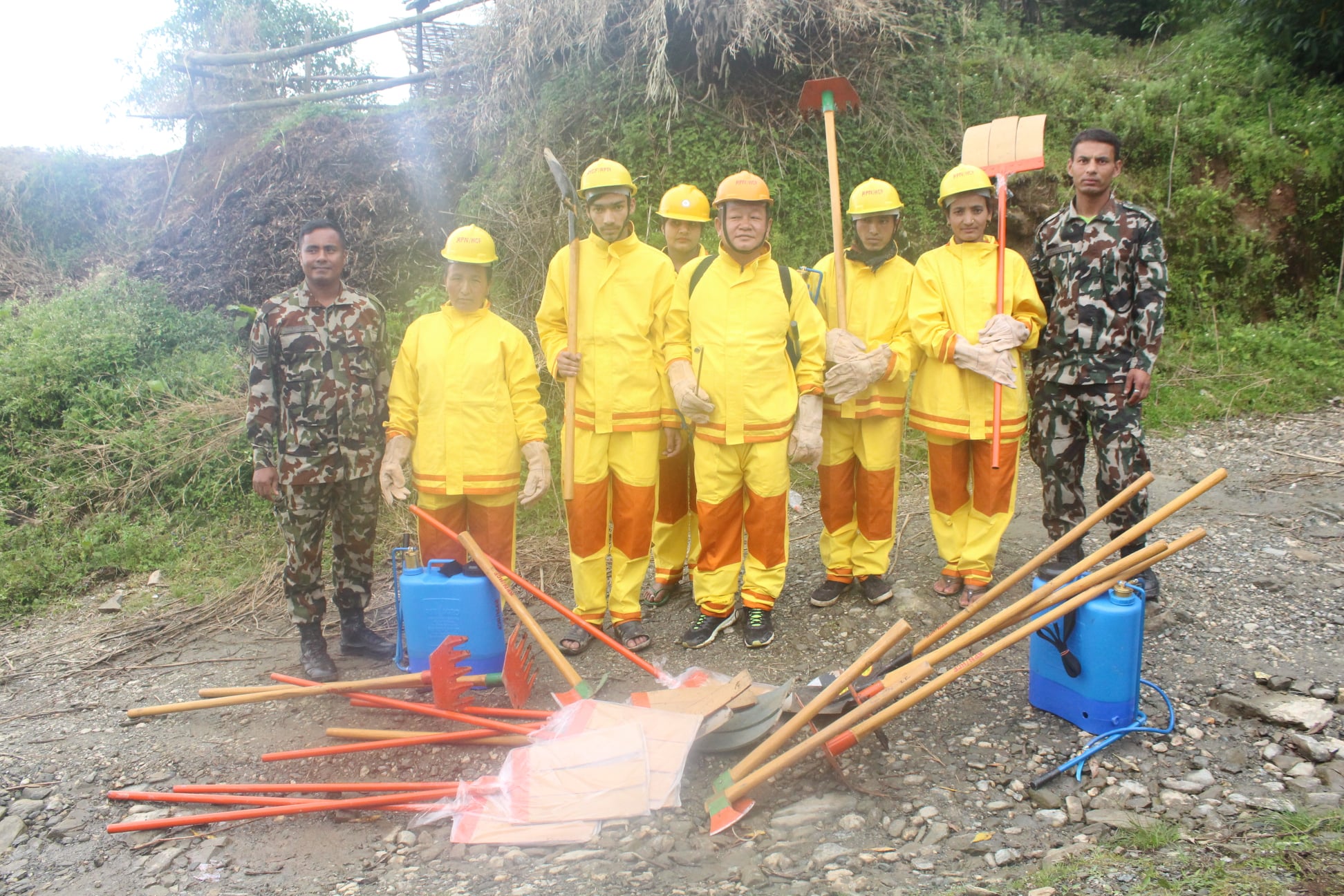 A forest fire management training in eastern Nepal. © RPN
A forest fire management training in eastern Nepal. © RPN
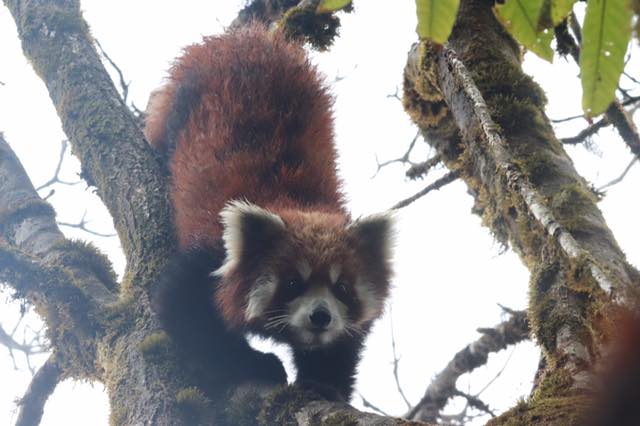
Wild red panda in Taplejung district. © RPN
This was part of RPN’s Program Coordinator, Sonam Tashi Lama, answer to a question from Rain Forest Trust in Voices from the Rainforest: The Realities of Wildfire Management. Sonam continued: “Secondly, education and awareness about the adverse effects of the wildfires with the local community will also be effective. In the Nepal context, the model of the community forest is working well on mitigating the incidents of wildfires as each and every member of the community are the watchdogs of their forest.”
Surya Bhattarai is one of our Forest Guardians from Sudap Khola Community Forest in Mamangkhe village in Taplejung district. He also informed us of another wildfire incident that burned approximately 12 hectares of forest near his village that is now contained. A wildfire in Basapachal Jharna Community Forest of Kalikot district in western Nepal was contained by local people, including our Forest Guardians. Fortunately, this incident happened soon after two days of community-based wildfire management training that we organized for 15 participants.
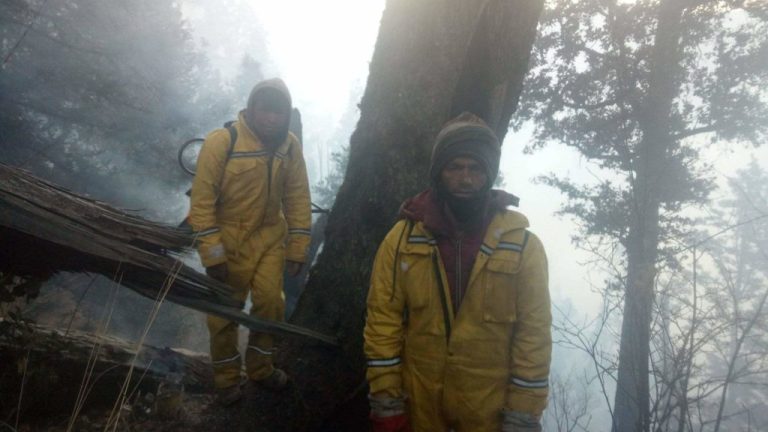
Members of the firefighting team in Basapachal Jharna Community Forest.
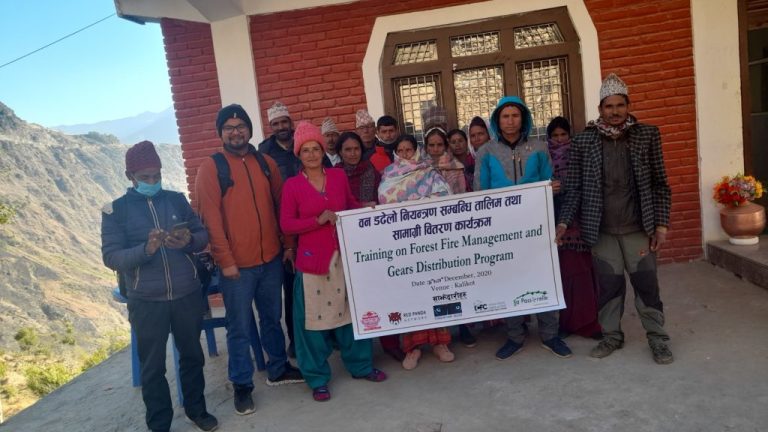
Forest fire management training participants in Kalikot district, western Nepal.
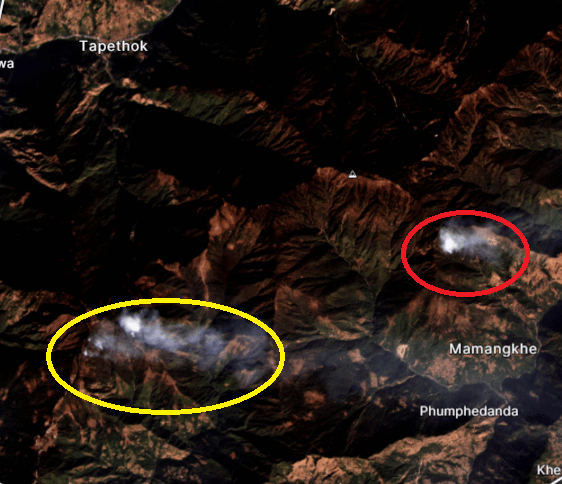
The yellow circle is the Pathibhara wildfire and the red circle is the wildfire near Mamangkhe village in Taplejung district.
Our goal is to offer a community-based wildfire management training for the people of Deurali Bhitri, Yamabung, Mayam Patal, and Pathibhara Simbu Community Forests this March and April. We need to also provide firefighting tools and personal protective gear to local CFUG members. If you would like to support these initiatives please donate here and choose "Pathibhara wildfire" as your gift designation when checking out.

